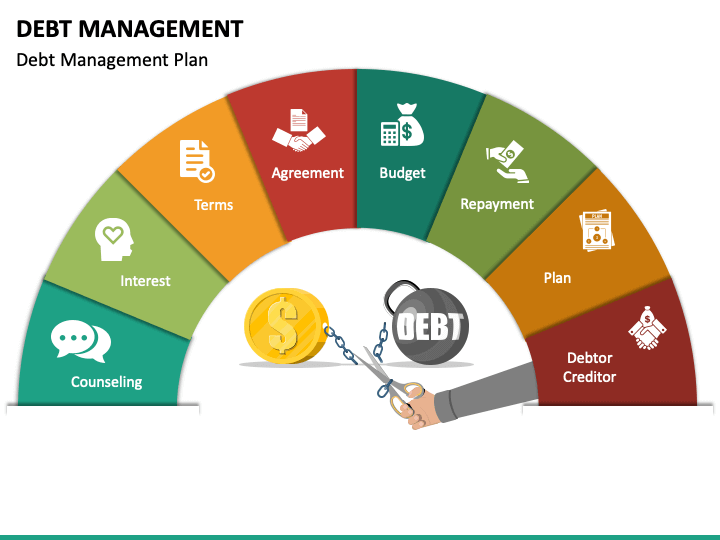How to Choose the Best Debt Consolidation Plan: More Discussion Posted Here
How to Choose the Best Debt Consolidation Plan: More Discussion Posted Here
Blog Article
Everything You Need to Know About Developing a Personalized Financial Obligation Management Strategy
In the world of individual money, creating a customized financial obligation monitoring plan is frequently the foundation of accomplishing monetary security and tranquility of mind. By diligently evaluating your current financial responsibilities, setting achievable monetary objectives, and crafting a functional spending plan, you lead the way for effective debt repayment strategies. However, the trip to monetary flexibility is not exclusively regarding initial planning; it also requires recurring surveillance and changes to make sure continued progress. As you browse the intricacies of developing a tailored financial debt administration strategy, understanding the complexities of each action is crucial to your financial success.
Assessing Your Present Financial Debt Situation
One should initially conduct a thorough analysis of their present financial debt obligations before developing an effective debt administration strategy. Evaluating your existing financial obligation scenario is a critical very first action in obtaining control of your finances. Begin by gathering all essential financial files, such as credit history card statements, lending contracts, and any type of impressive bills. Create a breakdown of each financial obligation, including the complete quantity owed, rate of interest rates, minimal month-to-month payments, and due dates. This thorough introduction will certainly supply a clear image of your financial standing and help prioritize which debts to address first.
After assembling this information, compute your total debt-to-income proportion by separating your regular monthly financial debt settlements by your month-to-month revenue. Comprehending these aspects of your monetary scenario will assist you in establishing a tailored financial debt administration strategy customized to your particular requirements and objectives.
Setting Financial Goals and Targets

When establishing monetary goals, it is necessary to be particular, quantifiable, attainable, relevant, and time-bound (WISE) As an example, you might establish a goal to settle a specific amount of financial debt within a particular period, such as lowering your charge card equilibrium by $5,000 in the next one year - More Discussion Posted Here. By establishing clear targets such as this, you can track your progress and stay encouraged to accomplish your financial obligation monitoring objectives
In addition, think about prioritizing your financial debts based on aspects such as rate of interest, superior balances, and repayment terms. By focusing on high-interest debts initially, you can save cash in the lengthy run and increase your journey towards economic freedom. Keep in mind, everyone's monetary situation is special, so customize your targets and goals to fit your private demands and circumstances.
Producing a Realistic Spending Plan
Crafting a well-defined budget plan is a basic action in efficient debt administration and monetary preparation. A practical budget plan functions as a roadmap for your financial health and wellness, helping you track your earnings, costs, and debt payments. To produce a sensible budget, start by listing all your sources of revenue. This includes your wage, side rush incomes, or any type of various other go to this web-site financial inflows. Next, directory all your fixed costs such as rent or mortgage, energies, insurance, and car loan repayments. Variable expenses like grocery stores, amusement, and transportation needs to additionally be consisted of. Set apart in between wants and needs to focus on crucial expenses and determine areas where you can cut down.
Regularly testimonial and readjust your budget plan as required to remain on track with your financial objectives and financial debt repayment strategy. By adhering to a reasonable spending plan, you can successfully manage your debt and work in the direction of a more secure financial future.
Discovering Financial Obligation Settlement Methods
After establishing a practical budget plan, the next critical action in effective financial debt monitoring is to explore different debt repayment methods. One typical technique is the snowball method, where you focus on paying off the tiniest financial debts initially while making minimum settlements on larger debts. This technique can assist develop momentum as you see smaller debts being cleared, providing motivation to tackle larger ones.
Another method is the avalanche technique, which includes prioritizing debts with the highest rates of interest. By targeting high-interest debts initially, you can lower the overall quantity you pay in interest over time. This method might be extra cost-effective over time, despite the fact that it visit this site might take longer to see specific financial obligations completely paid off.
Financial obligation loan consolidation is another alternative where you combine several financial debts into a single lending with a reduced rate of interest. This can streamline your payment process and possibly reduce the overall rate of interest paid. Nevertheless, it's vital to very carefully take into consideration the terms and charges related to debt consolidation to ensure it's the best choice for your economic circumstance.
Monitoring and Readjusting Your Strategy

Readjusting your strategy might include reallocating funds to tackle high-interest debts initially, bargaining with creditors for lower rate of interest or better settlement terms, or exploring extra revenue resources to expedite financial obligation payment. As your monetary scenario advances, your financial debt administration plan need to adjust as necessary to continue to be reliable. By remaining adaptable and positive in tracking and changing your strategy, you can maximize your initiatives towards settling your financial obligations successfully and achieving your financial objectives.
Verdict
In conclusion, creating a personalized financial debt management strategy involves evaluating existing debt, setting economic objectives, creating a sensible budget, exploring settlement methods, and monitoring and adjusting the plan as required. By following these actions, individuals can take control of their financial scenario and work in the direction of ending up being debt-free. It is very important to remain regimented and committed to the strategy in order to accomplish lasting monetary stability.
One must first perform a detailed assessment of their existing financial debt obligations before formulating an efficient financial debt monitoring plan.After developing a sensible budget plan, the next critical action in efficient debt monitoring is to check out numerous debt payment methods - More Discussion Posted Here.To efficiently handle your financial debt, constant tracking and adjustment of your financial debt administration plan are vital parts for lasting financial stability.Adjusting your plan may involve reapportioning funds to deal with high-interest debts initially, bargaining with financial institutions for reduced passion rates or far better payment terms, or exploring additional income sources to speed up debt repayment.In conclusion, creating a tailored financial obligation administration plan includes examining existing financial obligation, establishing financial goals, developing a reasonable spending plan, checking out payment methods, and monitoring and adjusting the plan as required
Report this page